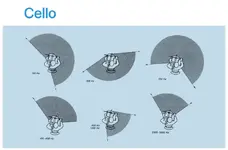The really important features of all the different systems relate to differences in time and/or differences in amplitude. What the microphone 'collects' is more down to choice and appropriateness than stereo. Blumlein often produces horrible results in spaces where the rear pickup is a bit of a mess, and I suppose the polarity reversal from the back works against you too. I've tried Blumlein twice in a large church and a smaller one, and won't try it again, I doubt. I've got a rather nice Chinese microphone with two multi-pattern capsules one over the other like the old Neumanns it's styled on, and cardioid works best on most sources, and you can rotate the angle through 90 degrees depending on the width of the sound source. When I was very young, I did some sessions with a big band, and they were after mega separation as stereo was quite new - so the woodwind were on one side of the room, the brass on the other, with drums and bass in the middle. Wide spaced microphones, and the do-wah was very powerful, and totally unrealistic. I recorded that way myself for quite a while, until I realised it just wasn't like a human hears - very very wide and often with a big drop in level for instruments in the gap. Now I tend to put headphones on, and then move the mics around and change patterns until it sounds 'whole'. I quite like spaced omni on a grand piano. Not too far apart, but it works nicely for me.




